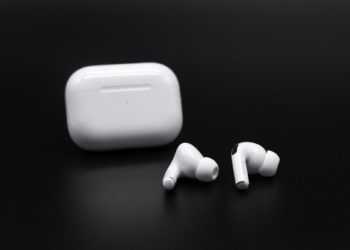So much for Donald Trump’s “force of personality” forcing Russian President Vladimir Putin to prove he wants to end the war in Ukraine.
The president’s hyped-up phone call with his Russian counterpart on Monday mostly served to highlight how far away any such breakthrough may be.
And more importantly, looking ahead, it raised new questions about how involved Trump really wants to be and widened transatlantic divisions on ending the war.
Ukraine and its European partners are pushing for a 30-day ceasefire to allow time for talks on a permanent peace agreement to start. Moscow has refused, insisting on talks now on a final deal. Since this process could take months, it looks like a ruse to allow Russia to press ahead with its offensives that are killing innocent civilians.
By announcing after his call with Putin that Ukraine and Russia would now hold talks “as only they can” on a ceasefire and ultimately an end to the war while the fighting rages, Trump sided with his friend in the Kremlin.
Trump also added new ambiguity to an increasingly toothless peace effort on Monday. He did nothing to quell an earlier suggestion by Vice President JD Vance that the US might simply wash its hands if there’s no progress. “I tell you, big egos involved, but I think something’s going to happen. And if it doesn’t, I just back away and they’re going to have to keep going,” the president told reporters in the Oval Office after the call.
Threatening to walk away is a classic dealmaker’s gambit. But given the administration’s extreme skepticism of aiding Ukraine, this might not be a bluff.
Trump also left the impression that the US would play a less direct role while Russia and Ukraine talked. He launched a vague trial balloon that the Vatican and the new American Pope Leo might get involved. Most observers believe that there will be no peace unless America exerts maximum leverage.
“It feels to me that the president maybe didn’t really try to pressure Putin at all. It’s good that they had a two-hour conversation but coming out of that what do we have?” asked Beth Sanner, a former deputy director of national intelligence.
“We have Putin continuing very maximalist demands … an agreement to talk about a framework for talking about a future peace deal and possibly a ceasefire that would come after agreements for many things,” Sanner told CNN’s Boris Sanchez.
“This is a call that I think it’s really hard to see this in any other way than Putin seemed to get exactly what he wanted.”
Russia seems very happy with the call
As ever, there was mystery about the full extent of Trump’s conversation with Putin, to whom he has often shown great deference.
Outsiders know only what the Kremlin and the White House want them to know about how it went. But Russian officials offered a few tantalizing hints of the atmosphere of the call. “I will tell you that conversations of such duration are rare when both presidents … neither of them wanted to end the conversation and hang up,” Kremlin presidential aide Yury Ushakov said Monday in comments that will do little to stem concerns among Trump critics that he’s an easy mark for Putin.
Before it took place, Monday’s call looked like it might mark a pivot point in the so-far fruitless US effort to end the war. After all, Trump told Fox News in an interview during his Middle East tour last week it was “turkey time,” raising expectations that he’d get tough with Putin.
And on Sunday, the president’s envoy Steve Witkoff said on ABC News that “the president has a force of personality that is unmatched.” Witkoff added, “He’s got to get on the phone with President Putin, and that is going to clear up some of the logjam and get us to the place that we need to get to. And I think it’s going to be a very successful call.”
But Trump won’t use the leverage that the US does have – for instance, it could toughen sanctions against Russia or send more arms and ammunition to Ukraine.
Asked by reporters in the Oval Office why he wouldn’t impose new sanctions, Trump replied, “Because I think there’s a chance of getting something done, and if you do that, you could also make it much worse.” He cautioned, “But there could be a time where that’s going to happen.”
Absent a deadline or more specificity, however, Trump’s threat comes without steel. It looks rather like a line designed to ease pressure on himself rather than to get Putin’s attention.
Trump also renewed his complaints about the cost of the war in Ukraine, making clear that he won’t emulate the military aid sent to Kyiv by the Biden administration, without which the effort to repel Russian forces will be severely constrained. “We gave a massive amount … It’s just a shame,” the president said.
Zelensky, politely, contradicts Trump’s position
Ukrainian President Volodymyr Zelensky wrote on X after the talks that he had spoken with Trump twice on Monday – once before the US leader talked with Putin, and afterward for a joint briefing with European leaders, including French President Emmanuel Macron and European Commission President Ursula von der Leyen.
Given the strategic necessity for Zelensky of avoiding new blowups with the president following their Oval Office argument in February, he was diplomatic. But in a long statement on X, Zelensky contradicted Trump’s formula. He called for stronger sanctions on Russia if it is unwilling to stop killing Ukrainians. He proposed direct negotiations with Russia at the Vatican, in Turkey or in Switzerland but said they must involve European and American representatives. And he warned, “It is crucial for all of us that the United States does not distance itself from the talks and the pursuit of peace, because the only one who benefits from that is Putin.”
“This is a defining moment. The world can now see whether its leaders are truly capable of securing a ceasefire and achieving real, lasting peace,” Zelensky wrote, in a comment that could be read at face value or as a critique of Trump’s efforts.
Trump often says that he wants to devote his second term to peacemaking. And if he’s sincere, he could leave the world in better shape.
“My whole life is like deals – one big deal,” Trump said Monday.
But his efforts so far are desultory. If anything, combat in Ukraine and Gaza has intensified since he took office. Trump claimed a notable humanitarian win last week by securing the release of the last living US hostage in Gaza by agreeing to indirect talks with Hamas that bypassed Israel.
But Trump’s receding interest in ending the war launched after the October 7, 2023, attacks has led to a vacuum. Now Israeli Prime Minister Benjamin Netanyahu has opened a new offensive aimed at controlling the entire enclave, where tens of thousands of Palestinians are starving. Their plight is an ill omen for Ukraine if Washington loses interest there, too.
Elsewhere, the president claimed credit for ending a terrifying escalation between India and Pakistan over Kashmir this month. But India – despite its close ties to the White House – disputed claims that the US intervention was decisive.
Such conflicts are brewed from decades of historical and nationalistic grievances. And each may be existential for the leaders concerned. So it’s hardly surprising that those involved are not being budged by Trump’s endeavors, which are superficial compared to the standards of historical peace US peace drives in places like the Middle East and the former Yugoslavia. Such wars run on generational clocks. Trump’s timetable is days and weeks.
Putin and Trump are both ‘tapping along’
“I believe Putin wants to do it … if I thought that President Putin did not want to get this over with, I wouldn’t even be talking about it,” Trump said in the Oval Office.
But it’s harder than ever to be optimistic that the Russian leader truly wants to end the war soon.
Of course, the conflict has been ruinous to Russia’s economy and has killed tens of thousands of young Russians. But in its readout, Russia said that Putin stressed that for the war to end, its “root causes” must be addressed. This includes specious claims that Ukraine needs to be “de-Nazified” (in other words, that Zelensky and democratic governance must be toppled), and severe restrictions must be imposed on the country’s sovereignty, political system and right to decide its own destiny.
Sure, Putin wants peace, but only on terms that it would be impossible for Ukraine to accept while remaining an independent nation.
A few weeks ago, Trump called for Russia to stop attacking civilians and wondered aloud whether Putin was “tapping me along.” By giving Russia what it wanted on Monday, it’s fair to ask whether Trump is less tapped against than tapping.
The post Peace in Ukraine looks further away after Trump’s call with Putin appeared first on CNN.




